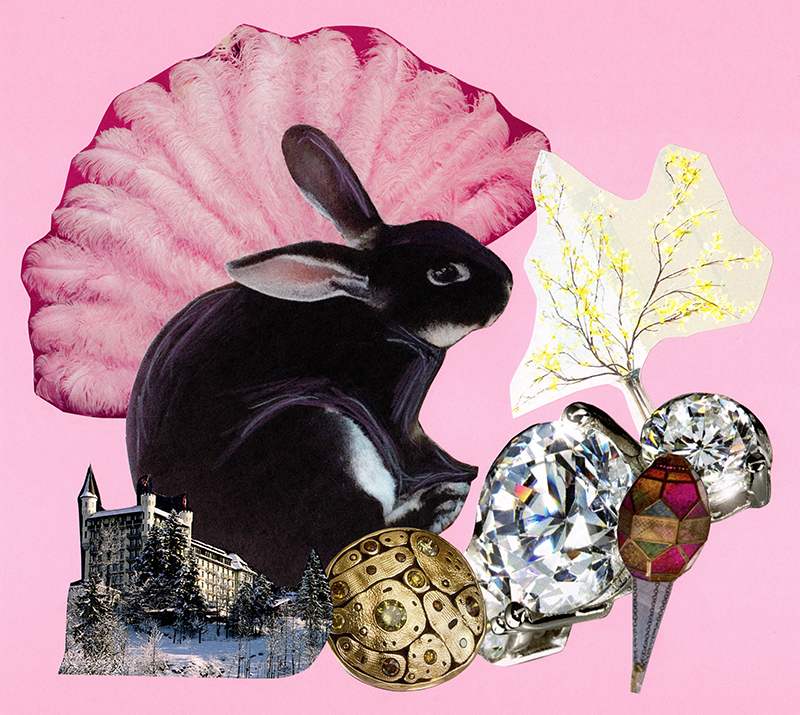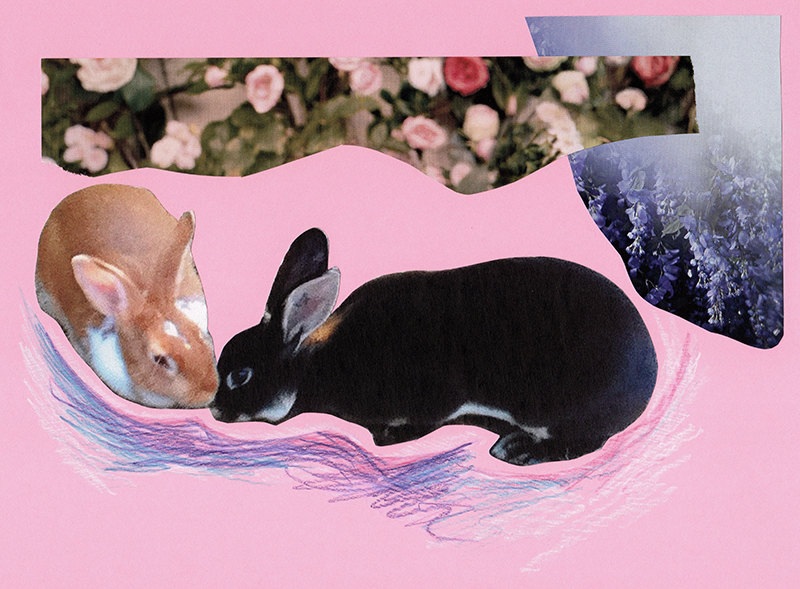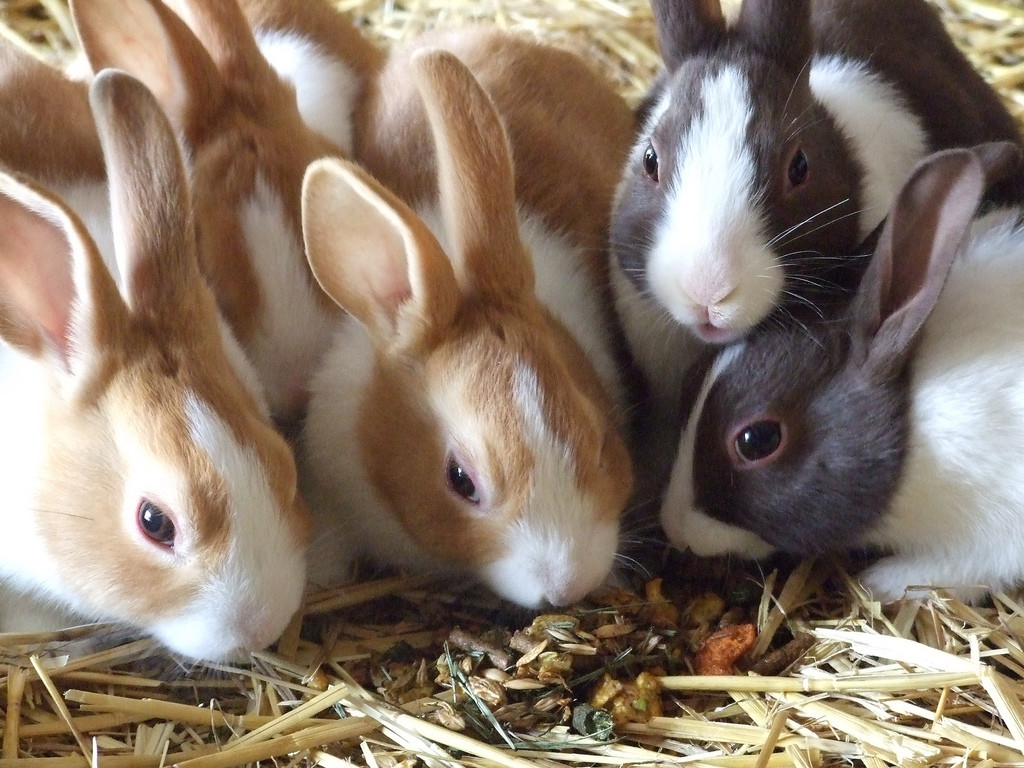When I attempted college for the first time, it took about a month for everyone involved to figure out that I was not ready to live on my own, away from familiar surroundings and my support system. I had a nervous breakdown, sobbed on the phone to my mom, and that was that. The next day she drove twelve hours from the San Francisco Bay Area to Reed College in Portland, OR, then drove twelve hours back with me and all of my stuff in the minivan. I’ve been at home with my parents ever since, for three years now.
During the month that I spent trying to Be A Real College Student, I got a pet rabbit. My dorm allowed small animals, and I was incredibly lonely, on the shy and timid side. In other words, I was desperate for comforting companionship. I looked at Craigslist ads, emailed a guy advertising baby Rex Rabbits, and paid him $25 as the adoption fee, plus $10 for the cage. Then Doof was mine! (His full name is Doctor Doofenshmirtz — I named him after the villain from Phineas and Ferb. Everyone hassles me about this because Doof is a very elegant rabbit whose proper name should be Shadow Prince or something like that.)

This new little creature was small and very scared and velvety black. I left the door of his cage open, and eventually he hopped out to explore my room. Soon he discovered that wainscoting is a great thing to chew on, as are rain boots and backpacks and especially laptop chargers. During the following days I learned that he enjoyed munching on leaves and grass, as well as peeing on things outside of his cage, like my bed. A little harness-and-leash dealio from Petco allowed me to take him for walks on the gorgeous green campus lawns. My fellow students were very enthused about this. Who wouldn’t be enthused about an adorable, curious baby bunny exploring the bushes and gamboling on the lawn?
Doof was my emotional support animal, although I didn’t know this vocabulary when I bought him. According to the ADA National Network website, emotional support animals “provide companionship, relieve loneliness, and sometimes help with depression, anxiety, and certain phobias, but do not have special training to perform tasks that assist people with disabilities.” (A psychiatric service animal performs similar functions, but does have the specialized training, and a different legal status.)
Here’s the hard truth, the truth that I’m ashamed to admit: when I got Doof, I was not equipped to care for him properly. I had the money for his pellets and hay, but I didn’t do enough research about rabbits’ needs. More crucially, I didn’t have the emotional energy to deal with getting a wild animal situated. Rabbits are domesticated in terms of appearance — selective breeding has made them damn cute and fluffy — but on the inside, centuries of evolution carry far more weight.
Rabbits in the wild are busy busy busy: foraging for food, keeping track of territory (yes, they’re highly territorial), and maintaining a social hierarchy with the other bunnies in their warren. Pet rabbits get bored, like the unfortunate dogs who are left at home alone all day. Without appropriate stimulation, bored animals will destroy your stuff. More importantly, they experience stress, and even anguish.
Unlike dogs, rabbits are prey animals, meaning that they are cautious and easily scared. To form a mutually beneficial relationship with your bunny, you have to be patient, learn to express affection the way rabbits do, and sort of individually domesticate your pet. Doof and I developed a very sweet relationship — he would lick my hand and I would rub his cheeks — but I wasn’t successful when it came to providing an environment with enough activities. I couldn’t live up to the responsibility that I had taken on.

Things turned out okay, because my mom came and rescued me. Now Doof and his friend Pumpkin live in my backyard along with our chickens, happily eating fallen leaves from the old apple tree, digging worrisome tunnels toward the fence, and bossing each other around. I miss living in close quarters with my bunny, getting those tiny bun-kisses, but the relationship we have now is much more satisfying to both of us. I know that he is able to fulfill the crucial desires so deeply encoded in his brain. It gives me a rush of joy to see Doof grooming Pumpkin, because I know their bond is precious to them. (In the wild they would be mates, but all of the rabbits I’ve owned are neutered, and yours should be too.)
I’m not trying to scare you away from getting an emotional support animal. I’m saying that an emotional support animal is a serious commitment. Whenever you get a pet, you are making a promise to that animal. The promise is, “I will take care of you, be kind to you, and do my best to make you happy.” Each of us has to seriously assess what “my best” is. If you’re brutally honest with yourself, your best effort might fall short of what the animal requires. You may need to get yourself to a healthier place before you can give a vulnerable creature what it needs.

Emotional support animals provide the emotional support in their title because you must cherish and care for them. There are days when you can’t tell yourself, “I want to live,” but you can say, “I have to live because someone needs to feed Sookie and she’s bonded to me.” In my own struggle with debilitating depression, animals have been immeasurably helpful. They remind me that food is the most important thing, that well-placed scritches are also important, and that digging holes is a good thing to do any day of the week. Animals lead comparatively simple lives. When their needs are met, the satisfaction is pure and strong, for both the pet and the caretaker. Meeting their needs is the essence of a positive human-animal relationship.
If you intend to get an emotional support animal, or any kind of pet, here are some things to remember: Adopt instead of buying! Don’t be like me and get a baby animal — rescue one of the thousands of older animals who struggle to find a home. Do a TON of research beforehand. More research than you think you need to do. Look up what the problems can be with the species that you’re considering. If you’re interested in bunnies, I recommend the book Understanding Your Rabbit’s Habits by Tamsin Stone. And hang in there, okay? Remember that emotional support can come from humans too. We’re all rooting for you.
Posted in commemoration of Doof and Pumpkin, two sweet deceased bunnies.